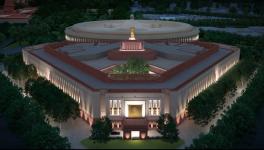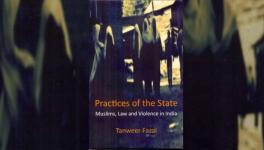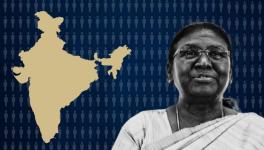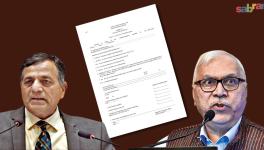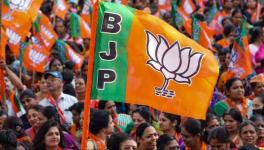Ashoka University Professor’s Research Hints at BJP Vote Manipulation in 2019
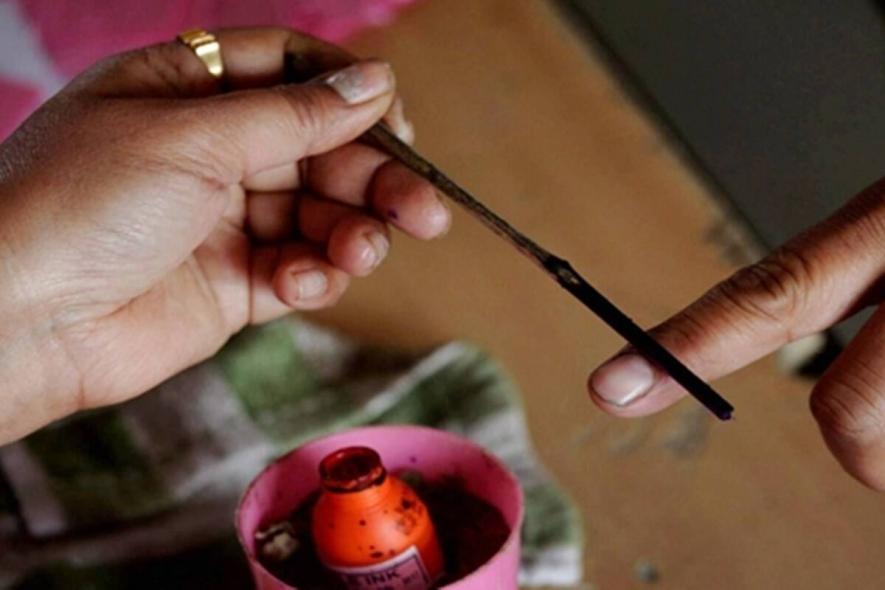
Representational Image. Image Courtesy: PTI
A recent research paper published by an Ashoka University economics assistant professor hinting at possible BJP vote manipulation in the 2019 Lok Sabha election has dragged the institute into a political slugfest.
The paper, titled ‘Democratic Backsliding in the World’s Largest Democracy’, was published by Sabyasachi Das on the Social Science Research Network on July 25.

After the paper triggered a war of words between the BJP and the Congress on Twitter, the university disassociated from Das. Academicians and prominent personalities immediately slammed the university for ‘bowing to pressure’ and not supporting Das.
ELECTORAL MANIPULATION?
In the research, Das documents “irregular patterns in the 2019 general election” and identifies “whether they are due to electoral manipulation or precise control, i.e., incumbent party’s ability to precisely predict and affect win margins through campaigning”.
He compiled “several new datasets” and presents “evidence that is consistent with electoral manipulation in closely contested constituencies and is less supportive of the precise control hypothesis. The manipulation appears to take the form of targeted electoral discrimination against India’s largest minority group—Muslims, partly facilitated by weak monitoring by election observers”.
According to the paper, the 2019 general election, “shows significant irregularities in the election data—the density of the incumbent party’s win margin variable exhibits a discontinuous jump at the threshold value of zero. It implies that in constituencies that were closely contested between a candidate from the incumbent party and a rival, the incumbent party (BJP) won disproportionately more of them than lost”.
“This is known as the McCrary test and is now a standard check for manipulation of running variable in the regression discontinuity design method used in analysis of political economy,” Das writes.
The research doesn’t find “similar discontinuities in the previous general elections for either the BJP or the INC [Indian National Congress] as well as for Assembly elections held simultaneously with the 2019 general election and those held subsequently”.
Das further writes: “The BJP’s disproportionate win of closely contested constituencies is primarily concentrated in states ruled by the party at the time of election.”
Though the McCrary test’s failure “does not necessarily imply electoral fraud”, according to Das. “If the incumbent party, due to its superior electoral machinery, was able to accurately predict and affect win margins in closely contested constituencies—a phenomenon known as precise control, then it could also generate such patterns. The incumbent party in India may have been able to exercise precise control in 2019 since it had significantly built up its organisational capacity in several states subsequent to its 2014 general election victory.”
The BJP “mobilised active party workers at the level of polling stations who monitored and shaped voter attitudes, backed by centrally managed teams analysing the collected information and suggesting campaign strategies”.
Precise control in this context, therefore, if exercised, is likely to be facilitated by localised and targeted campaigning facilitated by the grassroots presence of the party organisation.
However, Das used “a new question added to the NES in 2019 to measure campaigning in the form of door-to-door visits by BJP and other political parties in a representative sample of PCs to directly test for precise control”.
He found that neither the BJP nor any other party campaigned significantly harder in constituencies that BJP barely won. “Moreover, in BJP-ruled states, campaigning by BJP does not exhibit statistically significant discontinuity while that for the other parties does. This makes precise control less likely to be the primary mechanism.”
Though he doesn’t consider the possibility of manipulation of EVMs, Das points to a counting discrepancy. The Election Commission of India (ECI) initially released the “final” count of EVM votes polled for each parliamentary constituency (PC) for the first four out of seven phases of the election (373 out of 543 PCs).
Subsequently, the ECI released a “constituency-wise number of votes counted in EVMs which did not match the initial numbers”, he adds.
“When the media pointed out the discrepancy, the ECI removed the earlier figures from its website,” writes Das, who accessed copies of the earlier turnout data to measure the discrepancy.
‘VOTER SUPPRESSION OF MUSLIMS’
Das computed electorate share of Muslims at the level of Assembly Constituencies (ACs) using a three percent representative sample of voter lists and applied a “highly accurate religion prediction algorithm on their names and match it to polling stations and Acs as a potential mechanism of manipulation” to examine targeted voter suppression of the community.
Electoral manipulation “can take place at the stage of voter registration or at the time of voting or counting”. To examine the mechanisms facilitating manipulation, he focussed on “Muslim voters who generally do not support the BJP and are easily identified in the voter list due to their culturally distinct names. Therefore, they are potentially subject to both registration and turnout manipulation”.
“I consider two channels; first, strategic deletion of Muslim names from the list of registered voters or electoral rolls,” Das writes.
Second, he considers “strategic suppression of Muslim votes at the time of voting (or counting)”.
“At the same time, there were reports of mass deletion of voter names of minority groups from electoral rolls. Since the incumbent party enjoys lower electoral support among the minority groups, such deletions may provide an electoral advantage to the party,” the paper reads.
WAR OF WORDS
The paper sparked a controversy with Congress Lok Sabha member Shashi Tharoor tweeting that if “...the Election Commission and/or the Government of India have answers available to refute these arguments, they should provide them in detail. The evidence presented does not lend itself to political attacks on a serious scholar. E.g. the discrepancy in vote tallies needs to be explained since it can’t be wished away”.
This thread offers a hugely troubling analysis for all lovers of Indian democracy. If the Election Commission and/or the Government of India have answers available to refute these arguments, they should provide them in detail. The evidence presented does not lend itself to… https://t.co/intL81n9nH
— Shashi Tharoor (@ShashiTharoor) August 1, 2023
BJP Lok Sabha member Nishikant Dubey termed the research “half-baked”. “It is fine to differ with the BJP on matters of policy but this is taking it too far ... how can someone in the name of half-baked research discredit India’s vibrant poll process? How can any university allow it? Answers needed— this is not a good enough response”, he tweeted.
It is fine to differ with the BJP on matters of policy but this is taking it too far…how can someone in the name of half-baked research discredit India’s vibrant poll process? How can any University allow it? Answers needed- this is not good enough a response. https://t.co/vDCDFuPC58
— Dr Nishikant Dubey (@nishikant_dubey) August 1, 2023
In a statement posted on Twitter, a “dismayed” Ashoka University said that it “does not direct or approve specific research projects by individual faculty members”—thereby, disassociating from Das.
“Ashoka values research that is critically peer-reviewed and published in reputed journals. To the best of our knowledge, the paper in question has not yet completed a critical review process and has not been published in an academic journal,” the statement read.
Ashoka University is dismayed by the speculation and debate around a recent paper by one of its faculty members (Sabyasachi Das, Assistant Professor of Economics) and the university's position on its contents.
As a matter of record, Ashoka University is focused on excellence in…
— Ashoka University (@AshokaUniv) August 1, 2023
“Ashoka University is dismayed by the speculation and debate around a recent paper by one of its faculty members and the university’s position on its contents,” the university said.
Get the latest reports & analysis with people's perspective on Protests, movements & deep analytical videos, discussions of the current affairs in your Telegram app. Subscribe to NewsClick's Telegram channel & get Real-Time updates on stories, as they get published on our website.









